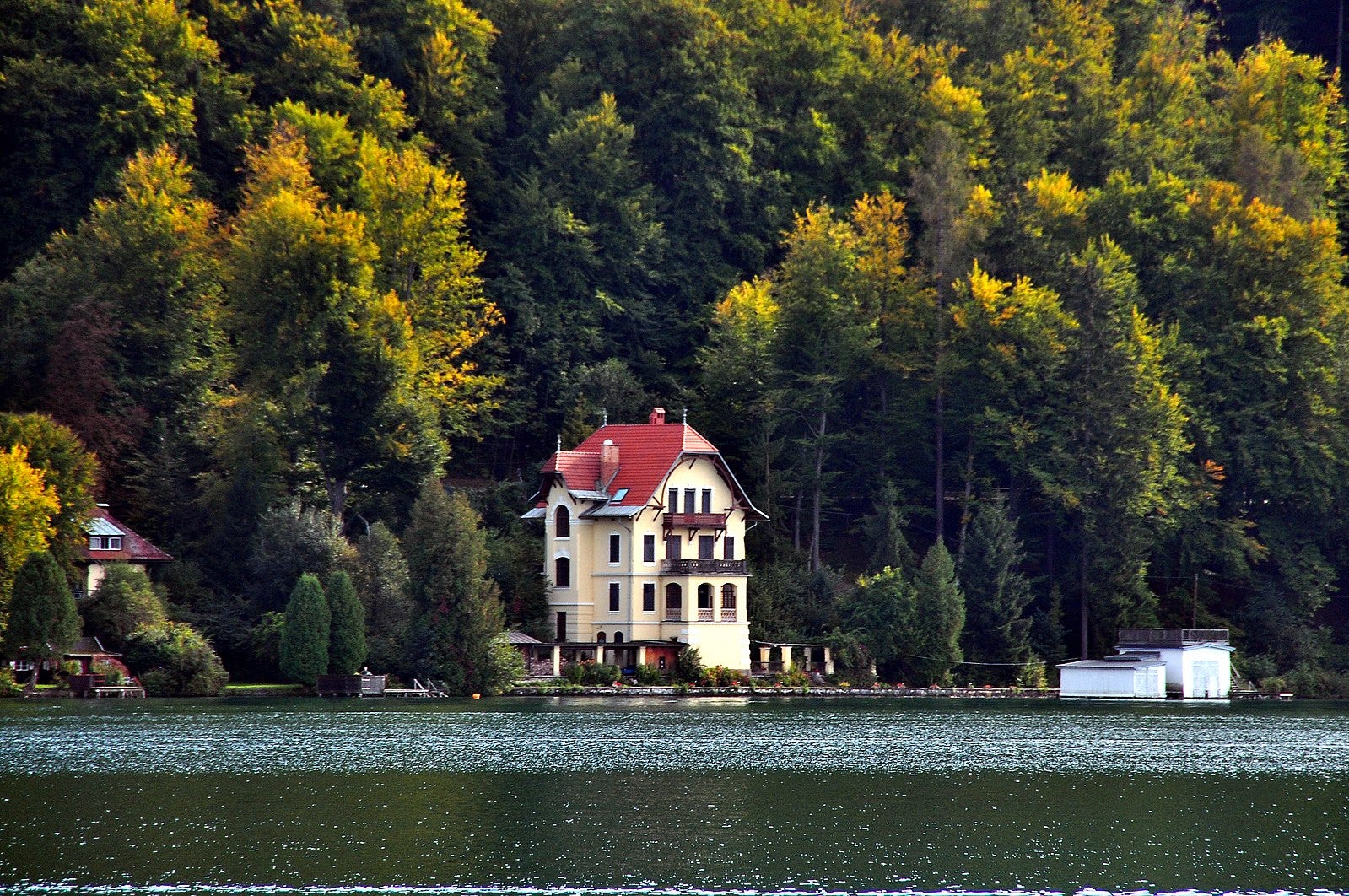
Gustav Mahler began composing his Symphony №5 during his summer holidays of 1901 and 1902 in the composing hut behind his new villa in Maiernigg, on the shores of the Wörthersee.


Why, as a young man on top of the world professionally, did Mahler spend the summer of 1901 writing a funeral march (the first movement of the fifth symphony) and three songs that would eventually become part of his song-cycle, Kindertotenlieder (Songs on the Death of Children)? Previous myth builders have suggested that his music was foretelling the eventual tragedies that would befall his new marriage. Call me a skeptic, but I think it was more likely due to the fact the he nearly died from an intestinal haemorrhage just a few months earlier in February.
Mahler returned to Maiernigg the following summer infused with the happiness and bliss that comes with a new marriage. He finished the symphony by writing an Adagietto and a triumphant final movement. He also wrote one of the most beautiful love songs ever written, Liebst du um Schönheit (If You Love for Beauty), poetry by Friedrich Rückert.
Liebst du um Schönheit
Liebst du um Schönheit, O nicht mich liebe! Liebe die Sonne, Sie trägt ein gold'nes Haar!
Liebst du um Jugend, O nicht mich liebe! Liebe den Frühling, Der jung ist jedes Jahr!
Liebst du um Schätze, O nicht mich liebe. Liebe die Meerfrau, [Die]1 hat viel Perlen klar.
Liebst du um Liebe, O ja, mich liebe! Liebe mich immer, Dich lieb' ich immerdar
If you love for beauty
If you love for beauty, Oh do not love me! Love the sun, It has gold hair!
If you love for youth, Oh do not love me! Love the spring-time That is young each year!
If you love for wealth, Oh do not love me! Love the mermaid, Who has many limpid pearls!
If you love for love, Oh yes, love me! Love me forever; I will love you forevermore!
The fifth symphony was a conscious move away from the Wunderhorn songs he had used as a source of inspiration for his first four symphonies and was his first attempt to write a completely abstract symphony in the conceptual (not musical) style of Brahms or Bruckner. It was premiered in Cologne in October 1904 and it received a mixture of boos and applause by the audience. The reviews were uniformly bad. It has since, of course, become one of the most cherished of his symphonies.
Here’s a wonderful discourse about Mahler from Leonard Bernstein’s Norton Lectures.
And an incredible performance of the Adagietto from the conductor and orchestra who first championed Mahler, Willem Mengelberg and the Concertgebouw Orchestra, made in 1926. It’s revealing to hear the style in which the strings play, sliding from note to note. Undoubtedly, this was the style Mahler would’ve heard and known, and it’s nothing like the style in which string players play today.
Here are my favorite performances:
Here’s a recording I made with the San Francisco Symphony Youth Orchestra, recorded live in Amsterdam’s Concertgebouw in 2015.
Nothing beats a great youth orchestra:
Greatest recorded trumpet fanfare.
